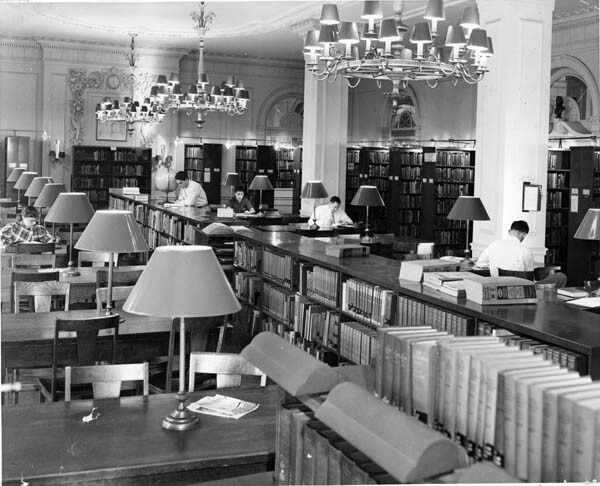
The origins of Cleveland State University date back to 1870 when the Cleveland Young Men's Christian Association began offering free evening classes in French and German. Following a period of sporadic course offerings in the 1870s, the YMCA's evening educational program became firmly established in the 1880s. In 1906, the YMCA combined its newly created day school with the evening school under the name of the Association Institute.
The need to achieve accreditation led the YMCA to re-organize its education program in 1929. At this time the schools' name was changed to Fenn College, in honor of Sereno Peck Fenn, who had served as president of the Cleveland YMCA for 25 years and as Board Director between 1868 and 1920. College lore has it that another reason for the name change was the desire by students for a more prestigious sounding name on their diplomas.
With several private colleges in Cleveland, including Case Institute of Technology and Western Reserve University, Fenn College focused on attracting students for whom college otherwise would be financially unattainable by offering a low-cost quality education. In line with this policy, Fenn College became the second college in Ohio, after the University of Cincinnati, to adopt a cooperative education program. This program of alternating classroom work with actual employment was required for all day students and was optional for evening students.
In 1937 Fenn College purchased the 22-story National Town and Country Club building at Euclid Avenue and East 24th Street. Renamed Fenn Tower in 1939, it provided needed additional classroom and office space. It also gave the college a prestigious "Euclid Avenue" address. Fenn Tower became known as "the campus in the clouds" and contained classrooms, a library, a gymnasium, a pool, student lounges, and other amenities—all within its vertical confines.
Throughout its history Fenn College never operated at a deficit. However, by 1963 increasing operating costs, competition from the new community college, and rumors of a possible state takeover placed Fenn in severe financial straits. That year the college released "A Plan for Unified Higher Education in Cleveland-Northeastern Ohio," calling upon the State to develop a state university in Cleveland, using Fenn College as its nucleus.
During James Rhodes' 1962 campaign for governor, he proposed that there should be a state university within a 30 mile radius of every citizen. At that time the nearest state university to Cleveland was Kent State. On December 18, 1964, Governor Rhodes signed legislation creating Ohio's seventh state university, Cleveland State University, and announced the appointment of a board of trustees with James Nance as chairman.
Historic Fenn Tower, formerly Fenn College, is located on Cleveland State University's campus near the former site of two Millionaires' Row mansions--that of Rufus K. Winslow, a Great Lakes shipping magnate, and G.E. Herrick, a businessman and largest stockholder of the Cleveland Railway Company. This onetime self-contained skyscraper "campus" for commuters ultimately became the first new housing aimed at transforming CSU into a residential campus.
Video
Audio
Images









